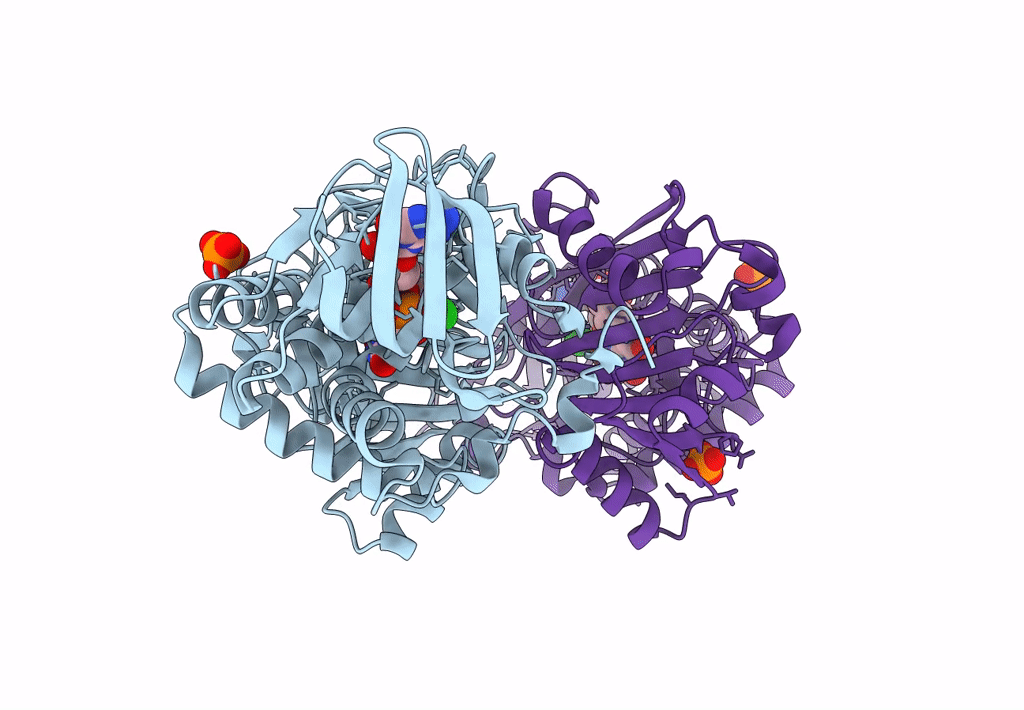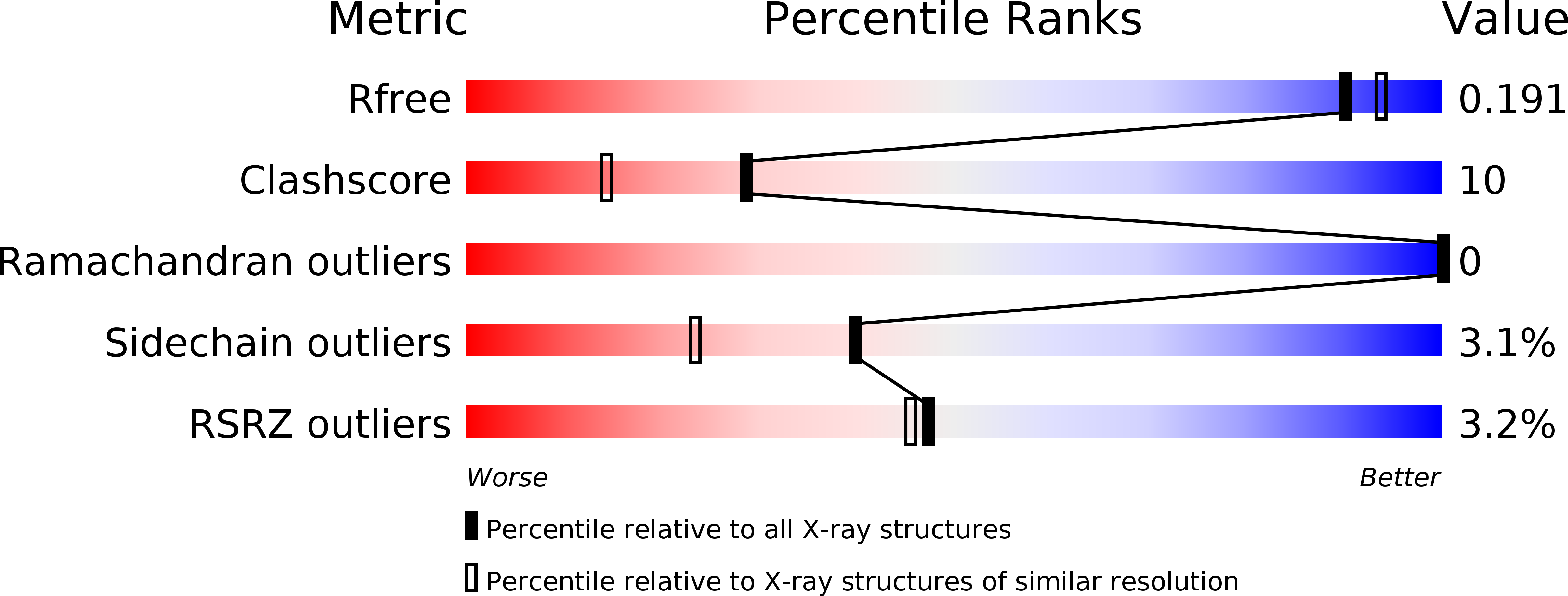
Deposition Date
2006-03-09
Release Date
2006-03-21
Last Version Date
2024-10-09
Entry Detail
PDB ID:
2GB0
Keywords:
Title:
Monomeric sarcosine oxidase: structure of a covalently flavinylated amine oxidizing enzyme
Biological Source:
Source Organism:
Bacillus sp. (Taxon ID: 69000)
Host Organism:
Method Details:
Experimental Method:
Resolution:
1.85 Å
R-Value Free:
0.19
R-Value Work:
0.16
Space Group:
P 1 21 1


